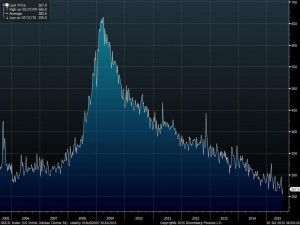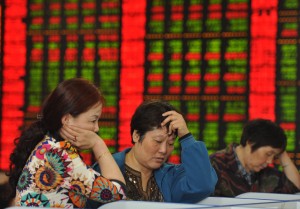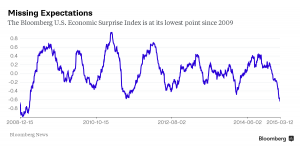
by Sarah Bauder | Dec 10, 2019 | gold
Considering that precious metals such as gold have enjoyed a bullish market, there’s no better time than now to invest. An easy way for investors to keep abreast of the price of the glittering metal is with a gold calculator. The question that arises is gold and inflation. In this article, 4 experts discuss whether gold is a good inflation hedge.
Gold Might Be A Valuable Addition To A Portfolio, But Not Because It Is A Good Hedge Against Anything
“In times of economic uncertainty, many advisors suggest gold as a hedge, especially against inflation. In other words, the expectation is that holding gold in the portfolio will compensate for other assets declining in value. Luckily, we don’t need to leave this question to opinion. Instead, we can answer it based on quantifiable facts.
The Federal Reserve Bank of St. Louis maintains a site nicknamed FRED, providing time series of almost any aspect of the U.S. economy. As a measure of inflation, we can use the Consumer Price Index for All Urban Consumers.
By dividing the gold fixing price by the consumer price index, we can inflation-adjust the gold price. With the data available on FRED, we can do so back to 1968. If gold was a good hedge against inflation, we should see the resulting chart continuously trend up.
Unfortunately, this is not what we see. Instead, we can identify the following course periods:
– from 1968 to 1980, gold was by far outperforming inflation
– after 1980, gold prices fell by 75%, and it took until 2011 for prices to recover
– from 2011 to 2015, inflation-adjusted gold prices fell by 30%
– since 2015, gold prices have been mostly flat
Interpreting these results, we find that over the 50-years from 1968 to 2019, gold prices rose about six times faster than inflation. This single finding supports the idea of gold being a good hedge against inflation. However, there have been long periods of underperformance: for about half the time throughout the past 50 years, gold prices were not only lagging inflation but declining at high rates.
In summary, we believe that gold might be a valuable addition to a portfolio, but not because it is a good hedge against anything. Instead, gold can have a place in an investor’s portfolio because its price is mostly uncorrelated to any other economic factor. However, investors considering gold should have a long investment horizon, and only allocate a small percentage of their funds to gold.”
Felix Bertram, Owner, Investment Adviser Representative, Bertram Solutions LLC
Since The US Dollar Is Based On Gold, That Makes Gold A Good Inflation Hedge
“Since the US dollar is based on gold, that makes gold a good inflation hedge because if the US starts printing too much money and dollars lose their value, anyone who has gold will retain its value even if the dollar becomes worthless from over-printing and inflation.”
Stacy Caprio, Deal Scoop
Gold Isn’t A Hedge Against Inflation
“Gold isn’t a hedge against inflation. It’s a hedge against volatility.
Gold peaked in the early 1980s and then declined for many years. Inflation grew while the price of gold fell. When the price of gold reached its nadir, the stock market was booming in the late 1990s. Then, as the markets corrected in the early 2000s, gold began its ascent. The price of gold seems to do well when people are not making money in financial markets and not when inflation is actually rising.”
Holmes Osborne, CFA, Osborne Global Investors
You Never Really Know What Is Going To Be An Inflation Hedge Until After The Event
“Up until 2007 the gold price largely tracked the increase in Federal Debt, but since then the relationship has largely broken. Initially, the gold price outperformed the increase in US debt, but more recently, it seems to have underperformed.
The million-dollar question being why? And will all this money printing lead to inflation.
With bonds yields being so low, invariably negative, you’d expect inflation. But it’s not happening. One would also expect gold to do well – let’s say, better than it has. But that clearly has not happened.
But is that about to change?
At Mines & Money last week I spoke with a portfolio manager at a US pension Fund. Although I know he’s always been an advocate of gold, he told me that more and more fund managers were looking at the yellow metal. Increasingly viewing it as a “safe haven asset”.
This does not seem to have fed into the gold market yet, but that doesn’t mean it won’t. Time to take a look at the history books.
Appreciate they 1970’s was a long time ago, but if you compare the bull market back then, with the one we’re in now, two things really jump out at you.
Firstly, how the gold price over the past 20 years or so has largely mirrored what happened in the 1970’s and secondly, if the gold price were to take off AND history was to repeat itself, the gold price could go A LOT HIGHER.
Right now, with the increasing debt and general uncertainty in the World across the World, do you think it’s ridiculous to have at least 1% of your wealth in gold? I don’t
You never really know what is going to be an inflation hedge until after the event. But right now, I think gold should be part of a solution – not THE solution. Because I don’t think there is A solution.”
Simon Popple, Brookville Capital
Taking into account the current uncertainties and volatility apropos of the global economy, gold is a good addition to a diversified portfolio. For those US investors interested in investing in gold with an IRA, have a look at the top Gold IRA companies. In addition, for those who already own gold and are considering storing it offshore, have a look at the top companies for your offshore gold investment.
by Andrew | Jul 31, 2015 | Definitions, Federal Reserve, gold, In the news

The Federal Reserve kept interest rates on hold at its latest policy meeting Wednesday, ensuring interest rates will remain near zero for at least another two months. Fed officials closed ranks voting 10-0 to keep interest rates unchanged, In what was a widely expected move by the broader market. With only three policy meetings remaining in which to make good on Janet Yellen’s signal to raise benchmark interest rates by the end of the year, the Fed faces an increasingly difficult decision on whether to move in September, or delay any change in policy to next year. Given the ongoing volatility in global markets, their decision will not be an easy one.
At the heart of the Fed’s dilemma is an improving employment picture, which goes some way to fulfilling the Fed’s mandate of achieving maximum employment, and has been cited on numerous occasions by Fed officials as the reason to start normalizing interest rate policy. Unemployment has fallen from nearly 10% at the height of the financial crisis in 2009, to 5.3% currently, and official month to month data continues to show signs of improvement. The advance reading of initial unemployment claims this week was 255,000, a drop of 26,000 from the previous week. The latest data marks the lowest level of weekly initial unemployment claims in over 41 years. Consensus expectations had been calling for initial claims numbers closer to 278,000. All else being equal, the employment figures would be enough for the Fed to start hiking rates at their September meeting, but everything else is not equal. There are several financial storms raging all across the globe which the Fed will need to ensure they do not exacerbate.

Commodity Price Rout Raises Deflation Concerns
The global rout in commodity markets is of particular concern, and plunging prices could see a return of the deflationary conditions which plagued the US CPI data for the first quarter of this year. Any increased probability of deflation would put
the other half of the Fed’s dual mandate of ensuring price stability in jeopardy, and any uncertainty regarding this half of the equation is likely to instill an increased degree of caution amongst Fed officials when it comes to raising rates.

The potential impact of the recent commodity crash was outlined in a recent report by Deutsche Bank analysts, who found that the current -29% drop in the benchmark CRB commodities index is likely to severely impact headline inflation in the coming months. DB forecasts headline CPI inflation to fall from 01.% currently to -0.9% in the next few months. If they are correct, this would be the biggest year over year drop in inflation since September 2009, and one of the lowest inflation levels on record.
Timing of Fed Hike Continues to be Pushed Out
Market reaction to the Fed’s latest minutes was upbeat, with benchmark US equity indices all posting modest gains. Treasuries rallied with yields falling on the back of increasing signs that a growing segment of investors are starting to discount the probability of any rate rise this year. A broader recognition of this new environment is likely to cement itself in the coming days after wall street analysts continue to digest the ongoing rout in commodity markets, and downward GDP revisions begin to come through. If the Fed fails to hike in September it is very unlikely that it would test the resolve of global markets by hiking in the midst of peak holiday season in December, a period when world wide liquidity is wafer thin and trading desks staffed by fresh faced grads out of college. The reality looks increasingly, as we have been saying all year, that there will be no hike this year – the earliest and most likely timescale for any rike would be mid 2016 at best. By then there should be some clarity on any potential impact from the fallout in China, and if the deflationary trends which were so prevalent at the start of the year reappear. Should deflationary conditions return, there will be virtually no room for the Fed to progress with its normalisation policy – and given the heightened volatility across global markets, it seems increasingly likely that a return to increased QE is likely to occur long before any rise in rates.
by Ryan Barnes | Mar 25, 2015 | CPI, Definitions, gold, Inflation
The U.S. economy got a little economic boost today with a stronger-than-expected CPI reading for February, and a strong Purchasing Manager’s Index (PMI) that continued to project GDP growth.
Headline CPI and core CPI both came in 0.2% higher than January, as slight price hikes at the pump for refined products balanced out a general breather in the declines in some of the base commodities. The headline numbers had been tracking negative for the past three months, which everyone was pretty much ok with chalking up to crude oil. Just so long as GDP growth came in respectably, there wasn’t any reason to panic.
But core CPI (ex-food and energy costs) was already lagging behind Fed goals of around 2%, and already in the midst of sending deflationary ripples up the global goods chain, into…well, just about everything.
Muddled Waters for First Rate Hike
It’s created a tense chess match between investors and the Fed the past few weeks. It started just after the stellar (as in +295,000) February jobs report last month, when the consensus started to form that the Fed would have to act sooner rather than later in creating a interest rate normalization cycle.
The key first step of that cycle is getting us off the floor of zero percent rates – a stance that doesn’t befit a growing economy and presents what Yellen herself has called an “asymmetrical risk”.
U.S. Definitely Growing…But How Much?
Just as soon as we seemed to have some headway into a summer rate increase, nearly every economic indicator in the U.S. started been printing well below analyst estimates. In fact, the depth of our misses has hit a multi-year high, according to Bloomberg analysis:

In light of this reversal, both investors and the Fed have had to take stock of things. First quarter GDP estimates continue to be ratcheted down – from the 2.5% – 3.0% level I highlighted last month (a number that was freshly lowered at the time) to an average Q1 GDP estimate of about 1.5% today.
Cranky Markets are Volatile Markets
It’s why we’ve seen a spike in volatility around every asset class – fixed income, forex, commodities, and equities have all been bumping around trying to align their compass to the next clear trend line. Would the Fed remove “patient” in the March FOMC meeting? Was September the new June (for the first rate hike)? Was 2015 off the table entirely?
Answering these questions is challenging enough in isolation, but it’s been exacerbated by the stunning rise the the USD index, which alters true price action in commodities and long bonds. The surging U.S. dollar is a de facto rate hike. It lowers the cost of imports dramatically (a deflationary force), and it makes our exports more expensive overseas.
And while the realities of pricier U.S. exports certainly hurt some companies more than others, the simple fact is that close to 50% of the total revenues of the S&P 500 member companies is derived in a currency other than the U.S. dollar.
2014, Part Deux?
It’s quite astonishing how much the first quarter of this year is looking like the first quarter of last year. Tick by tick, indicator by indicator, we seem to be replicating that market environment.
This time last year we were watching interest rates hit new lows, but convinced the party had to end any moment – inflation was coming, and we needed to position ourselves away from fixed income and into equities, gold, and other commodities. Fixed income turned out to deliver stronger returns than even equities did.
GDP looked to be on track for a good start to the year, but then a bout of really bad whether caused us to actually contract as an economy in Q1. Most of the top analysts said “don’t worry, we’ll be strong in the back half of the year”, and sure enough we were. The U.S. turned in over 4.5% growth in the next two quarters.
Looking around today, it’s much the same setup – so far. The key differences between then and now are this:
1) the unemployment rate is lower than last year; we have clearly moved close enough to full unemployment in the Fed’s eyes that it’s no longer an impediment to a rate increase. That box is checked off.
2) the USD is much stronger (10-20% or more) against every major global currency. As I’ve discussed, this move alone is the equivalent of a 25-50 bps rate hike.
In fact, if the dollar hadn’t been zooming so hard the past six months, there’s a chance the Fed would’ve put a token 25bp hike out there last week. Instead, Yellen reminded us that the Fed isn’t there to make things easy for investors, saying the Fed “can’t provide and shouldn’t provide” certainly to markets when it comes to the timing of rate hikes.
We don’t seem to be in any danger of that.







